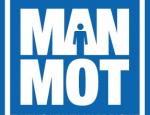My role
- About Us
AAA screening: is extra surgery worth it?
The complexities around the cost-effectiveness of screening have been highlighted in a new report on screening for abdominal aortic aneurysms.
While regular ultrasound screening can slash the likelihood of dying from a ruptured aneurysm among men by half, the risk remains of unecessary surgery for some. Others question the cost-effectiveness per life saved.
At present, half of all patients undergoing surgery for emergency aneurysm repair will die from their ruptures. A high toll.
But four controlled trials (in the UK, Denmark and Australia) involving 127,891 men (and 9,342 women) found that ultrasound screening could be used to cut the number by half in men aged 65—79.
Perhaps because men were twice as likely to have surgery as women. (Elective surgery is recommended for aneurysms larger than 5.5cm to prevent rupture.)
However, for all the lives saved, it is clear that some surgery is unnecessary. The study's co-author Dr Paul Cosford, of the East of England SHA, warned that screening for AAAs remained was controversial. He said: 'The balance between risk of rupture and risk of elective surgical repair is difficult to judge for people who are healthy. Patients may therefore be asked to undergo this risk to repair a large aneurysm which may not kill them.'
West London GP Dr Sarah Jarvis, a member of the Primary Care Cardiovascular Society (PCCS), told Healthcare Republic: 'Screening for aneurysms is an issue which keeps coming up, largely because the mortality rate from ruptured aortic aneurysms is so much higher than that following elective repair.'
We need to know what population groups to target and whether the treatment is beneficial enough for it to be worth screening at a population level, said Dr Jarvis.
'I suspect that the cost per life saved by screening is likely to be very high.'
In This Section
Haringey health humour
I'd rather admit I love John Ryan!


 Donate to the MHF
Donate to the MHF
 Man MOT
Man MOT